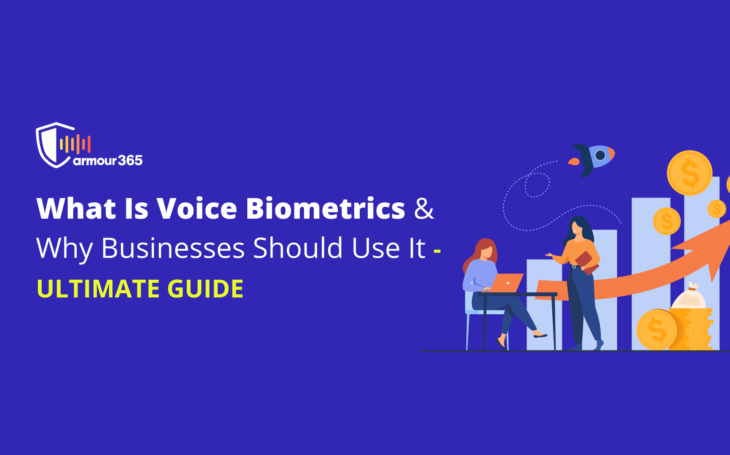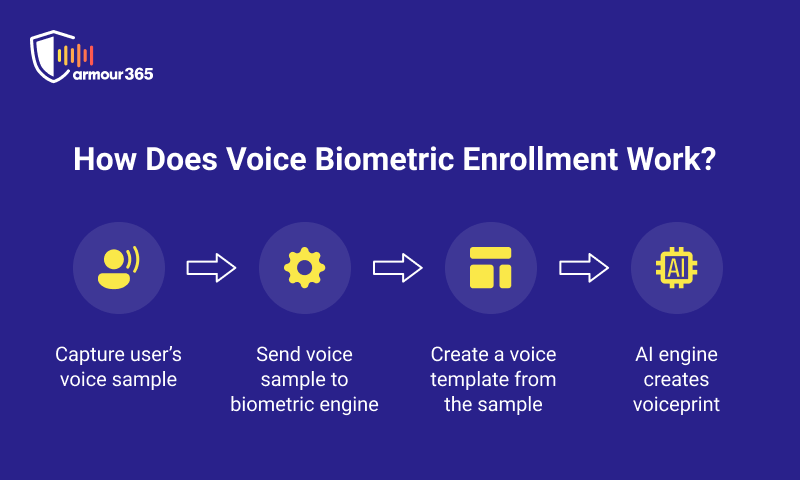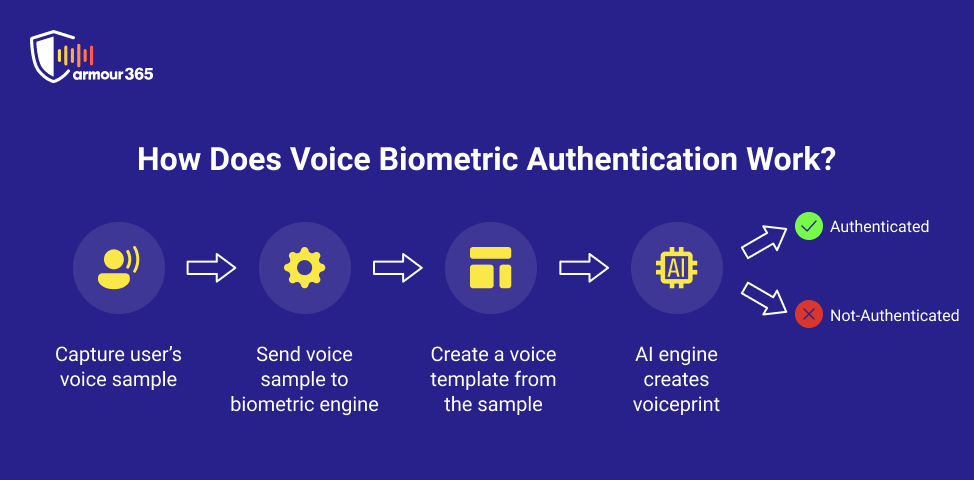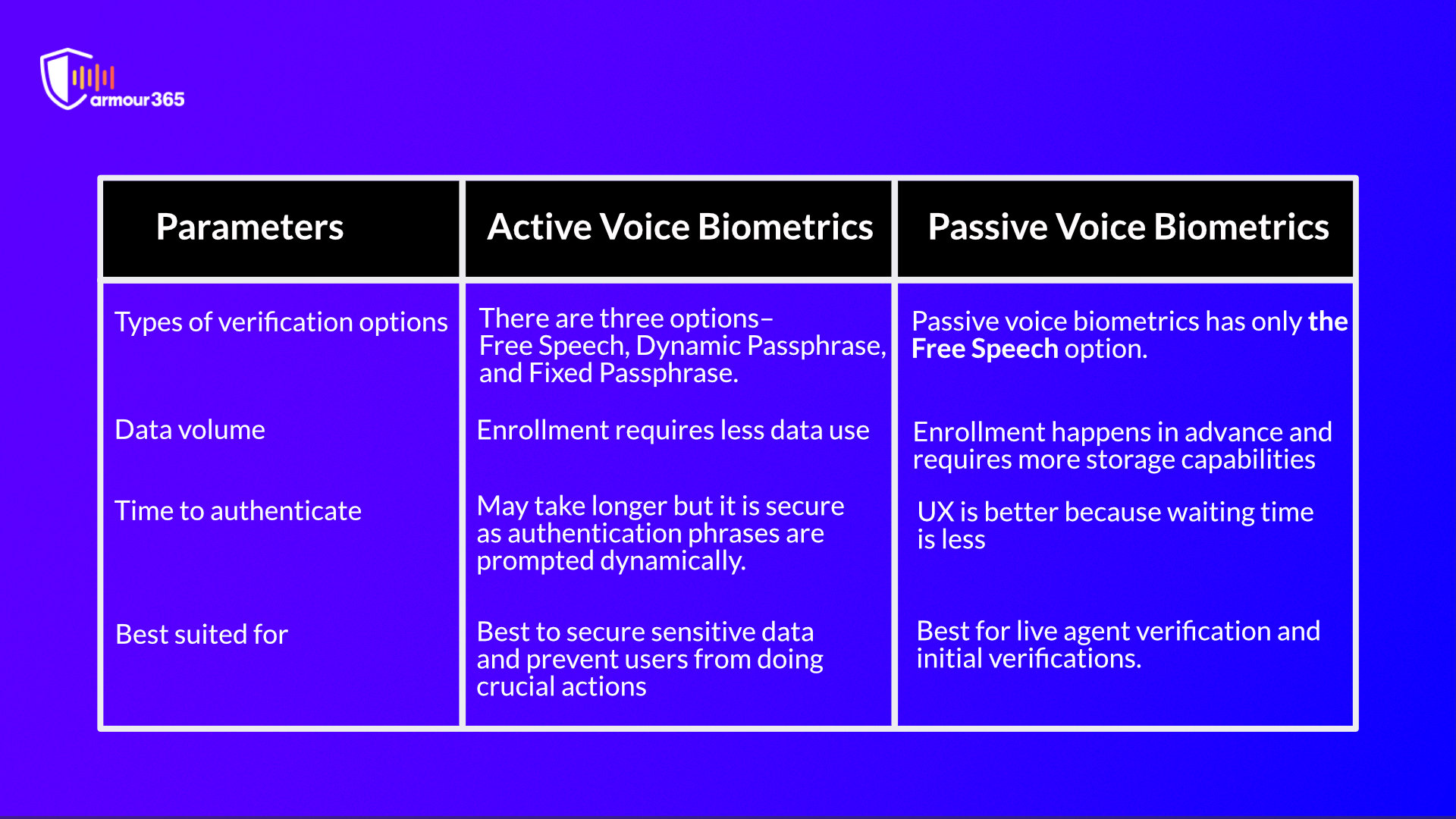
Every day more than one million people are joining the internet. According to Cybersecurity Ventures, people connected to the internet and interacting with the data will be 5 billion in 2020, and it is expected to increase to 7.5 billion by 2030. All these internet users across the world will create 200zetabyts of data.
The traditional password system and 2FA authentication are proven to be only 50% safer than it claims to be because of the advanced hacking and deepfake technology.
At this stage, the AI-powered voice biometrics system is considered to be one of the safest data protection methods in modern-day cybersecurity. Voice biometrics is being adopted by top banking and financial services to save millions of dollars and also without compromising the customer experience.
In this post, let’s see why voice biometrics is the best to secure your business data.
What is user authentication?
The process of proving a user’s digital identity is called authentication. The user is asked to provide credentials that are associated with their ID. To protect unauthorized access, it is critical to have authentication methods in place. The most common authentication method is the usage of passwords. The problem with it is that they can be inconvenient to the user as they have a lot of them to remember. In fact, Forbes predicted that 300 billion passwords would be used by humans and machines worldwide in 2020, and it turned true.
One of the unique side effects of the pandemic was the growing need for contactless authentication methods. In response to this, biometric verification technology has emerged as a highly convenient and secure method of authentication. Apart from going keyless, one of the biggest benefits of biometric technology is the increased security that it offers.
Biometrics uses a person’s unique traits to authenticate their identity quickly and seamlessly. Thanks to its convenience, security, and speed, biometrics technology has been welcomed with open arms by businesses and consumers alike. Among the different biometric methods, voice is the most popular one as it is the only one that can be used remotely.
Voice biometrics can authenticate users with high levels of accuracy and prevent them from being victims of impersonation. The best part is that it does all of this without being intrusive and takes only a few seconds. The user’s voice is analyzed by the AI algorithm, and it is recognized as a string of binary data, which is as unique as a fingerprint- it is called a voiceprint.
Adoption of Voice Biometrics
The voice biometrics market is expected to be worth $3.9 billion by 2026. Customers are more than happy to ask aloud on their phone’s microphone for services. One of the biggest advantages of voice biometrics is that it doesn’t require the physical presence of the user. With a simple phrase, they can even transfer money from one account to another.
The voice biometrics technology offers — brand differentiation and helps the business gain a high ROI while enhancing the customer experience, all at the same time, with minimum fuss. The Covid-19 pandemic has accelerated the need for reliable authentication, not only in terms of customer-facing use cases but also for employee and business-facing use cases. This is where voice biometrics becomes the perfect digital tool for user authentication.
Why Should You Use Voice Biometrics?
Voice biometrics requires only a microphone, and 6.3 billion people already have it on their smartphones. Therefore, the adoption of voice biometrics is not something that will be met with resistance. Apart from that, they have several different use cases; let’s see how businesses can benefit by using voice biometrics.
- It provides a more safe and secure authentication solution. The user doesn’t have to share any personal information.
- Since users don’t have to spend time proving their identity or remembering any passwords, or checking for an OTP, the entire authentication process is as seamless as it can be.
- Unique profiles for each user can be created.
- Passwords and security questions are easy to exploit when a hacker gains access to your phone, but it is almost impossible to copy and mimic the same voice data. If you thought that scammers could easily record the user’s voice and use the recording to authenticate their identity in the presence of voice biometrics technology, then you are wrong.
- With voice biometrics, you can even sign contracts or legal documents without having to step outside.
- The voice biometrics technology is incredibly easy to use. All that the user needs to do is follow the instructions and speak accordingly.
- It does not require any additional hardware. Therefore, businesses end up cutting costs that would have otherwise been spent on setting up infrastructure.
How Does Voice Biometrics Work?
In voice biometrics, it isn’t what the person says; it is the person who is speaking that is authenticated—Voice biometrics work by extracting the characteristics that identify a person’s speech from other people. A voiceprint or voice template is created based on these unique characteristics.
There are two methods in which the voice of the caller is authenticated:
1. Voice biometric enrollment and
2. Voice biometric matching
Voice Biometric Enrollment
During the voice enrollment process, the system collects the user’s voice data. The voice biometrics analyzes the various characteristics in the voice samples, such as tone, pitch, speed, accents, and weeds out the ambient noise using neural networks. The algorithm considers all the characteristics to create a unique voiceprint, and it is stored securely.

Voice Biometrics Verification
Once the user’s voiceprint is captured and stored in the system, it is used to verify the user. During the authentication process, the user needs to talk. The voice biometrics system captures the voiceprint and verifies whether the voiceprint matches with the template on its database.

AI-powered voice biometrics systems like armour365™ are equipped with an anti-spoofing layer to prevent attackers from accessing the file using voice recording and voice samples.
Types of Voice Biometrics Authentication
Though the process behind voice biometrics is enrollment and verification, the methods involved in voice biometrics authentication are quite different. Voice biometrics authentication can be broadly classified into active voice biometrics verification and passive voice biometrics verification methods.
Active Voice Biometrics
In this type of voice authentication method, the user is requested to say a prompted phrase or a guided natural speech. There are three types of verification options in active voice biometrics.
1. Free Speech – The user is free to speak anything in multiple languages.
2. Dynamic Passphrase –The user is prompted to repeat a “one-time” generated passphrase, acting as a liveness check.
3. Fixed Passphrase – The user is asked to speak a “pre-set” passphrase, which ensures the user’s two-factor authentication.
Passive Voice Biometrics
As the name suggests, passive voice biometrics happen silently in the background. The system automatically captures the user’s voice in the background and verifies the identity. Since the verification process is happening automatically in the background, this method of verification has only the Free Speech verification method.
Active Vs Passive Voice Biometrics
Active and passive voice biometrics has their own merits and demerits. Let us compare active and passive voice biometrics methods to get a better idea.
Verification options
In active voice biometrics, there are four types of verification options. Whereas in passive voice biometrics, there is only a free speech option.
If you want to give more verification options to your customers/users, active verification is better.
Time taken to authenticate
The time taken to authenticate the user is a little longer in the active voice biometrics methods since the system has to generate dynamic phrases, and the user has to utter the phrase, or the user has to say their fixed password.
Since the verification process is happening in the background automatically, the passive voice biometrics system authenticates the user a little faster when compared to the active voice biometrics.
Data Volume
When compared to active voice biometrics, passive voice biometrics needs more storage. As the verification and enrollment happen in the background, the amount of data stored will be a little higher.
Security
The active voice biometrics has a slightly little upper hand when it comes to security. As told before, there are multiple verification options in active voice biometrics. Plus, in the dynamic passphrase method, the user has to utter the generated phrase, which will make the hackers’ life a little hard.
Here is a quick comparison table to help you understand better

How does voice biometrics prevent fraud?
The recent hacks are very sophisticated. Hackers are using the latest tech and AI to make deepfake, which are capable of fooling even trained professionals.
The Wall Street Journal says that there could be devastating financial and legal ramifications if the deepfake technology becomes mainstream. Well, there’s no doubt about that.
Here are a few examples of financial frauds using deepfakes:
- A UAE banker was scammed into sending $400,000 into the accounts of the scammers
- The CEO of a UK-based energy firm was scammed into sending $243,000
McKinsey found that forms of synthetic identity fraud are the fastest-growing types of financial crime. With the advent of deepfakes, it will be increasingly difficult to prevent fraud and identity theft. For hackers that want to build a model of someone’s voice, they could gather voice from several sources such as media appearances, conference calls, corporate videos, interviews, presentations, keynote addresses, etc. That’s how easy it is for hackers to gain access to the voice samples of the victims.
How can organizations ensure that they guarantee the safety of both their customers and the organization itself by thwarting deepfakes? By using voice-powered biometrics.
Since voice biometrics provides real-time voice authentication by comparing a saved voiceprint with that of the caller, it helps ratify a person’s identity. Many characteristics of the caller are analyzed before authentication. At Armour365™, we use more than 120-140 characteristics while creating a voiceprint. Since it has an anti-spoofing layer, even if the synthetic voice is used, it identifies the caller as fraud and shuts them down.
Voice Biometric Use Cases:
Voice biometrics technology is used for authentication in several industries, thanks to its enhanced security features. The technology is seeing incredible growth and adoption around the world. Let us see a few use cases for voice biometrics technology industry-wise.
Workforce Management:
For businesses that have a large, distributed workforce, voice biometric verification is a secure way to badging systems. Not only does it provide a GDPR compliant solution, but it also reduces absenteeism.
Healthcare services:
Voice biometrics provides an extra layer of security for healthcare applications that are related to healthcare records and patient management. It does not allow unauthorized access to patient records. Voice biometrics also meets the compliance regulations of HIPAA and HITECH. Access to medical devices is also made quicker with voice biometric authentication.
Financial services:
From impacting security to cost savings and an increase in productivity, voice biometrics has changed the shape of financial services. Low-level and mundane tasks like resetting a password or unlocking an account can be handled by the voice biometrics system while the agents can work on solving critical tasks. Voice biometrics can also be used to create voice signatures, which is a legally binding method. These voice signatures can be used to authorize financial transactions.
Contact Centers:
Using voice to authenticate callers saves time for both the company and the customer. It reduces the security questions that are posed to verify the identity of the callers. It provides a seamless verification process that lets agents finish calls fast and reduce costs as well.
Online commerce:
Businesses that let you shop online are plagued by the problem of false orders. Not only does it create bottlenecks in the company’s supply chain, but it also results in huge financial losses. Implementing voice biometrics to authenticate orders is one of the best ways to reduce the occurrence of false orders.
Brands That Have Adopted Voice Biometrics
Even though the voice biometrics system is being used in many industries, the technology is getting into the spotlight recently; many brands are using voice biometrics to protect their customer data, especially banking and financial service companies. Here are some of the brands that are using voice biometrics.
- HSBC UK used voice biometrics to prevent £249 million in a fraudulent transaction. HSBC now has nearly 2.8 million active voice biometrics users.
- The Australian and Newzelan Banking Group (ANZ) is using voice biometrics to authenticate their customers. Nearly 50% of ANZ customers are using voice biometrics.
- Altigen Communications is one of the best Microsoft communication technology companies, has introduced voice biometrics into its Fintech service to provide an extra layer of protection to the customers.
If businesses have highly sophisticated tools for security, so do scammers to commit frauds. Organizations must protect their customers’ information and their data at all costs. Voice biometric authentication has become one of the most effective tools to prevent fraudsters from scamming their way into your network. It will help prevent fraud identity theft, offer frictionless authentication, and personalize the interaction.
armour365™ is an AI-powered voice biometrics system, which can easily be deployed on all communication channels like IVR, Telephony, WhatsApp, etc., for secure and faster verification. Use our demo to experience how our patented voice biometrics system works.




